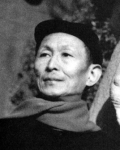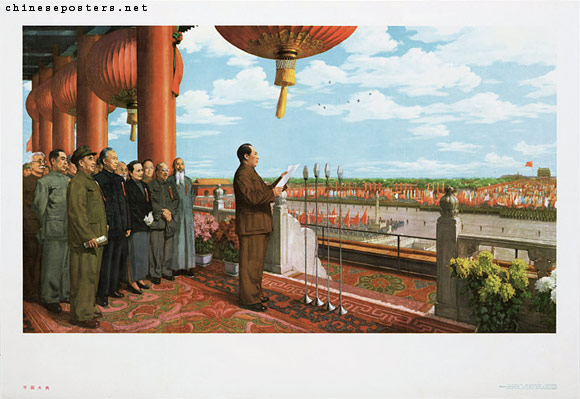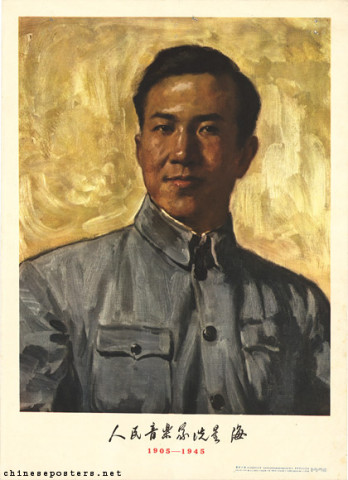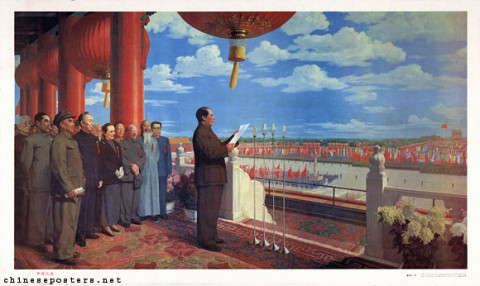 Dong Xiwen (1914-1973) was a native of Shaoxing, Zhejiang Province. In 1934, he entered the National Hangzhou Arts Academy. The Academy sent him to Hanoi, Vietnam, in 1939, where he studied for six months. During the war, he worked in Guizhou and Chongqing. He became fascinated with the ancient murals in Dunhuang, Gansu Province, which he studied for two and a half years. After the war, he was recruited by Xu Beihong as an instructor at the National Beiping Arts College. There, he attempted to create a distinctly Chinese style of oil painting.
Dong Xiwen (1914-1973) was a native of Shaoxing, Zhejiang Province. In 1934, he entered the National Hangzhou Arts Academy. The Academy sent him to Hanoi, Vietnam, in 1939, where he studied for six months. During the war, he worked in Guizhou and Chongqing. He became fascinated with the ancient murals in Dunhuang, Gansu Province, which he studied for two and a half years. After the war, he was recruited by Xu Beihong as an instructor at the National Beiping Arts College. There, he attempted to create a distinctly Chinese style of oil painting.
The Founding of the nation, 1964
In 1948, Dong started making art in support of the revolution. He prepared the portraits of Mao Zedong and Zhu De for the auditorium where the first National Congress of Literary and Art Workers was held. He witnessed Mao's proclamation of the new People's Republic, and joined the Party in December 1949.
The painting shown here, The Founding of the Nation [Kaiguo dadian, 开国大典] was created in 1953. As it shows a number of State leaders, the fate of the painting was linked to the political fate of those leaders. This meant that over the years, Dong had to paint three new versions, in order to bring his artistic rendering in line with the political situation. In the early 1950s, Gao Gang had to be removed from the original line-up of leaders. In 1972, Dong, although seriously ill, was forced to paint the fourth version, to remove certain persons, including Liu Shaoqi, who had come under a cloud during the Cultural Revolution or who had fallen foul of Jiang Qing. The artist who assisted Dong with this version was Zhao Yu. Once the Cultural Revolution had ended, a new version had to be created, which basically meant restoring the original.
The Founding Ceremony of the Nation [PLA calendar 1985]
After Dong's death, other artists, including Jin Shangyi, took over. The latest version of the painting - the eighth, shown here - is included in the collection of the Museum of the Chinese Revolution in Beijing.
The Founding Ceremony of the Nation-Souvenir of visit to Tiananmen, ca. 1980?
Most recently, tourists visiting the gate building facing Tiananmen Square can buy a small-sized copy of the famous painting as a souvenir.

![The Founding Ceremony of the Nation [PLA calendar 1985]](../sites/default/files/images/e13-105_0.jpg)





![The Founding Ceremony of the Nation [PLA calendar 1985]](/sites/default/files/styles/large/public/images/e13-105_0.jpg?itok=uoEjRUR8)

